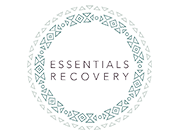For those not familiar with hydrocodone, it is the generic version of Vicodin, one of the most widely prescribed narcotic drugs in the U.S. for treating pain. And this is substantiated by a study published by the U.S. Drug Enforcement Administration (DEA). The study revealed that physicians in the U.S. wrote close to 138 million prescriptions for hydrocodone, including the brand variant Vicodin, in 2013.
Although doctors today are writing fewer prescriptions for these medications, they continue to be a problem for individuals who have already become addicted to them, according to most addiction experts. For those curious, compared to 2013, there were roughly 93 million and 83 million prescriptions written for Vicodin and other hydrocodone-containing products in 2016 and 2017, respectively.
What You May Not Have Known About Vicodin and Hydrocodone but Probably Should
When taken as prescribed by a licensed physician, Vicodin is highly effective in combating pain. And this explains why it is one of the more commonly prescribed Schedule II substances in the U.S. For those not already in the know, Vicodin is available in either extended-release capsules or extended-release tablets. According to Medline Plus, an online consumer health information resource and part of the National Library of Medicine, extended-release capsules are taken orally every 12 hours. And the extended-release tablets are taken only once each day.
Whether taking capsules or tablets, physicians routinely advise individuals to take their medication around the same time each day. That stated, one of the biggest unspoken truths about Vicodin and other hydrocodone-containing products is that, even when taken as prescribed by a licensed physician, many people still struggle with side effects while on these drugs. Those same side effects are even more intense for individuals who are addicted and flat out abuse them. Some of the more commonly reported side effects linked to hydrocodone-containing products and the brand Vicodin include the following:
- Back pain
- Fatigue
- Frequent, difficult, or painful urination
- Headaches
- Insomnia or hypersomnia
- Muscle cramps
- Stomach cramps
- Swelling of the legs, ankles, or feet
- Tinnitus
- Tremors
- Xerostomia or dry mouth
Along with these symptoms, individuals who regularly abuse Vicodin or its generic counterpart often also experience the following:
- Anxiety
- Constipation
- Depressed breathing and heart rate
- Depression
- Drowsiness
- Lightheadedness
- Nausea
- Vomiting
- Vertigo
Something else worth noting when it comes to Vicodin and the like is that these drugs contain acetaminophen. Therefore, individuals who do not take them as prescribed or flat out abuse them are at risk of falling victim to liver damage due to the 300mg to 325mg of acetaminophen in every capsule or tablet they consume. To that end, studies show that consuming 4,000 mg or more of acetaminophen per day can significantly increase the risk of liver damage.
Why Do People Misuse or Abuse Vicodin and Hydrocodone?
The overwhelming majority of people who abuse Vicodin initially started taking the medication to alleviate pain. Over time, however, many started taking more of these medications than prescribed to them in hopes of achieving faster and more effective relief from their pain symptoms. While doing so did help speed relief from pain, it also ushered in feelings of euphoria that ultimately set the stage for addiction. While this is unfortunate, there is some good news. Many people who become addicted to Vicodin or hydrocodone will at some point get the help that they need to put their addiction behind them. Call us at 302-842-2390
Treating Vicodin and Hydrocodone Addiction
Since many people become physically and psychologically dependent on Vicodin or hydrocodone, it is best to seek help from a licensed rehab facility when trying to quit them. In these facilities, the process to overcome Vicodin or hydrocodone addiction typically starts with going through and ultimately completing detox. It is important to note that many people are, unfortunately, met with severe withdrawal symptoms as their body works to rid itself of these drugs and other contaminants. Fortunately, nearly all of the roughly 14,000 rehab facilities across the U.S. provide medications that can help ease and even resolve such withdrawal symptoms. Two of the more notable ones include Naltrexone and Buprenorphine. And to address the psychological aspect of an individual’s addiction to Vicodin or hydrocodone, many facilities also offer one-on-one or group counseling with a licensed addiction therapist.
Bottom Line
In summary, even as directed by a physician, there are plenty of side effects linked to taking Vicodin or any hydrocodone-containing medication. But it should be noted that those side effects are far more intense when individuals develop an addiction and begin to abuse them. If you can relate to the latter and need help finding a rehab facility in your area, consider speaking with one of our friendly associates today.

